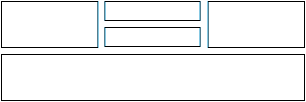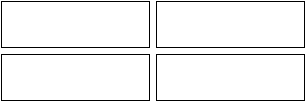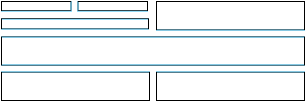| |
use Workflow::wftk::XML;
$in = $ARGV[0];
$info = $ARGV[1];
$panel_w = $ARGV[2];
$panel_h = $ARGV[3];
$rotate = $ARGV[4];
open IN, $in or die "Can't open $in for reading";
$in = xml_read (*IN);
close IN;
$string = xml_stringcontent ($in);
$string =~ s/\n//g;
$string =~ s/<br\/>/\n/g;
sub make_style {
$color = xml_attrval ($in, 'color');
$color = xml_attrval ($in, 'fgcolor') unless $color;
$color = 'black' unless $color;
$size = xml_attrval ($in, 'size');
$size = 16 unless $size;
$stroke = xml_attrval ($in, 'stroke');
$stroke = 'none' unless $stroke;
$family = xml_attrval ($in, 'font');
$family = 'verdana' unless $family;
$style = xml_attrval ($in, 'style');
$style = "; $style" if $style;
foreach $attr ('text-decoration', 'font-weight', 'font-style') {
my $v = xml_attrval ($in, $attr);
if ($v) { $style .= "; $attr:" . $v; }
}
return "font-family:\@fonts/$family.ttf; font-size:$size; fill:$color; stroke:$stroke$style";
}
sub copy_text_attributes {
my ($text, $in) = @_;
foreach $attr ('text-decoration', 'font-weight', 'font-style') {
xml_set ($text, $attr, xml_attrval ($in, $attr));
}
}
if ($info eq 'no-info') {
# First run through.
$svg = xml_create ('svg');
xml_set ($svg, 'width', $panel_w);
xml_set ($svg, 'height', $panel_h);
$text = xml_create ('text');
xml_set ($text, 'x', '0');
xml_set ($text, 'y', '0');
xml_set ($text, 'style', make_style ($in));
#copy_text_attributes ($text, $in);
xml_append ($text, xml_createtext ($string));
xml_append_pretty ($svg, $text);
print xml_string ($svg) . "\n";
exit;
}
# Second or third run through, we have an info file from 'identify'.
open IN, $info or die "Can't open $info for reading";
$info = xml_read (*IN);
close IN;
if ($rotate) {
# if the info file is from a rotated graphic, third time through.
$h = xml_attrval ($info, 'height');
$w = xml_attrval ($info, 'width');
$svg = xml_create ('g');
$image = xml_create ('image');
xml_set ($image, 'x', '0');
xml_set ($image, 'y', '0');
xml_set ($image, 'height', $h);
xml_set ($image, 'width', $w);
xml_set ($image, 'xlink:href', xml_attrval ($info, 'file'));
if ($rotate == 90 || $rotate == 180 || $rotate == 270) {
# If the rotation is to a right angle, no need to clip. Just place the image and go on.
xml_append_pretty ($svg, $image);
} else {
# This is hard, so I'm not doing it yet. It requires trigonometry, and my brain hurts from it.
xml_append_pretty ($svg, $image);
}
} else {
# Second time through: draw text straight, with box.
$margin = xml_attrval ($in, 'box-margin');
$margin = 2 unless $margin;
$size = xml_attrval ($in, 'size');
$size = 16 unless $size;
$h = xml_attrval ($info, 'height') + $margin*2 + $size; # Font size correction because trimming cuts off at top as well...
$w = xml_attrval ($info, 'width') + $margin*2 + $size;
# Now build the SVG for the overall caption.
$svg = xml_create ('g');
$text = xml_create ('text');
xml_set ($text, 'x', $margin + $size/2);
xml_set ($text, 'y', $margin);
xml_set ($text, 'style', make_style ($in));
#copy_text_attributes ($text, $in);
xml_append ($text, xml_createtext ($string));
$box = xml_create ('rect');
xml_set ($box, 'x', '0');
xml_set ($box, 'y', '0');
xml_set ($box, 'width', $w);
xml_set ($box, 'height', $h);
$stroke = xml_attrval ($in, 'box-stroke');
$stroke = 'black' unless $stroke;
$width = xml_attrval ($in, 'box-line');
$width = '1' unless $width;
$fill = xml_attrval ($in, 'box-fill');
$fill = 'white' unless $fill;
$style = xml_attrval ($in, 'box-style');
$style = "; $style" if $style;
if (xml_attrval ($in, 'box') eq 'no') {
$stroke = 'none';
$fill = 'none';
}
xml_set ($box, 'style', "stroke:$stroke; stroke-width:$width; fill:$fill$style");
xml_append_pretty ($svg, $box);
xml_append_pretty ($svg, $text);
# If there is a direction, we rotate the text by a certain number of degrees and if the text is now vertical we need to
# swap its height and width for location calculation.
# November 1, 2006 - doesn't work due to IM bugs. Someday we might want to revisit this; it generates good SVG and SHOULD work.
#$direction = xml_attrval ($in, 'direction');
#$rotated = 0;
#$midpoint = ($w/2) . "," . ($h/2);
#$negmidpoint = (-$w/2) . "," . (-$h/2);
#if ($direction eq 'up') {
# ($h, $w) = ($w, $h);
# $rotated = 1;
# xml_set ($svg, 'transform', "translate($midpoint) rotate(-90) translate($negmidpoint)");
#} elsif ($direction eq 'down') {
# ($h, $w) = ($w, $h);
# $rotated = 1;
# xml_set ($svg, 'transform', "translate($midpoint) rotate(90) translate($negmidpoint)");
#} elsif ($direction eq 'inverted') {
# $rotated = 1;
# xml_set ($svg, 'transform', "translate($midpoint) rotate(180) translate($negmidpoint)");
#}
#
#if (xml_attrval ($in, 'rotate')) { # Arbitrary rotation -- doesn't affect placement (I don't care about it *that* much)
# $rotated = 1;
# $rotation = xml_attrval ($in, 'rotate');
#
# $svg = transform_svg ($svg, "translate($negmidpoint)");
# $svg = transform_svg ($svg, "rotate($rotation)");
# $svg = transform_svg ($svg, "translate($midpoint)");
#}
#
#if ($rotated) {
# $midgroup = $svg;
# $svg = xml_create ('g');
# xml_append_pretty ($svg, $midgroup);
#}
}
# Now figure out the location on the panel and set a transformation on the overall 'g' (group) tag, and output that puppy, it's done.
# Caveat: if the panel width and height are 0, then this is the second time through and there will be a third time. Act accordingly.
if ($panel_h == 0 && $panel_w == 0) {
$g = $svg;
xml_set ($g, 'transform', 'translate(5,5)');
$svg = xml_create ("svg");
xml_set ($svg, 'height', $h+10);
xml_set ($svg, 'width', $w+10);
xml_append_pretty ($svg, $g);
} else {
xml_set ($svg, 'transform', "translate(" . calculate_location (xml_attrval ($in, 'location'), $h, $w, $panel_h, $panel_w) . ")");
}
print xml_string ($svg) . "\n";
sub transform_svg {
my ($svg, $t) = @_;
my $s = xml_create ("g");
xml_append_pretty ($s, $svg);
xml_set ($s, 'transform', $t);
return $s;
}
sub calculate_location {
my ($location, $h, $w, $panel_h, $panel_w) = @_;
if ($panel_h == 0 && $panel_w == 0) { return "0,0"; }
my $x;
my $y;
my @loc = split /,/, $location;
if ($loc[0] =~ /^top/) {
$y = 0;
} elsif ($loc[0] =~ /^middle/ || $loc[0] =~ /^center/) {
$y = int(($panel_h - $h) / 2);
} else {
$y = $panel_h - $h;
}
if ($loc[0] =~ /right$/) {
$x = $panel_w - $w;
} elsif ($loc[0] =~ /middle$/ || $loc[0] =~ /center$/) {
$x = int(($panel_w - $w) / 2);
} else {
$x = 0;
}
shift @loc;
foreach my $offset (@loc) {
$offset =~ s/^ *//;
my @o = split / /, $offset;
if ($o[0] eq 'up') {
$y -= $o[1];
} elsif ($o[0] eq 'down') {
$y += $o[1];
} elsif ($o[0] eq 'left') {
$x -= $o[1];
} elsif ($o[0] eq 'right') {
$x += $o[1];
}
}
return "$x,$y";
}
|


